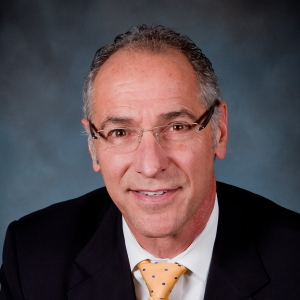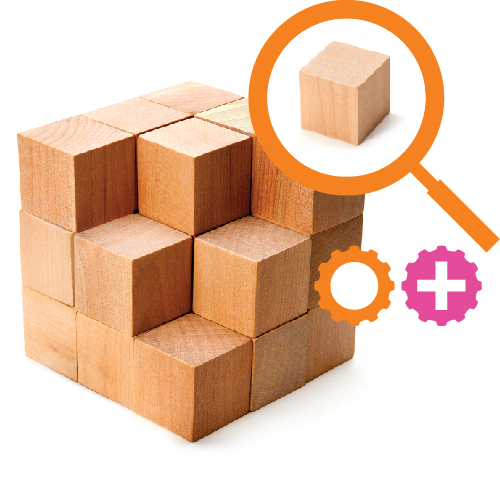Lots of companies are willing to tweak a process step or two to streamline their production workflows a bit; but who is willing to wholesale rip out existing equipment and processes and suspend business for 3 months to fundamentally change how they do business? Barksdale Portraits balanced the potential of leapfrogging ahead of the competition by 3 years to the risk of losing the company within a year. But in the end, they made the right call.
PODi is hosting a webinar with Wayne Barksdale, President of Barksdale Portraits, on Tuesday, March 22, when he will share his story of their experiences, their results, and insights into how and when to make such a gutsy decision. Here are some excerpts from a preparatory interview with him.

Greg Cholmondeley: Give me a little background about Barksdale Portraits up to the point where you decided to make this dramatic change.
Wayne Barksdale: Barksdale Portraits produces school portrait packages, yearbooks and other printed photographic products for schools across the country. We were founded back in 1922 and were one of the originators of this industry. Back then we built our own box cameras and painted our own portrait backdrops. Of course, our technology evolved over the years. We had even been digitally printing yearbooks on Xerox iGen4 presses for quite some time, but we were still using silver halide photographic printing technology on old Kodak RP30s for our portraits.
GC: So, why change, and why now?
WB: Well, the RP30s were 10 years past their useful end of life, were costly to run, and were environmentally unfriendly. We were familiar with digital printing from our yearbook division, but were waiting for the image quality to improve to level acceptable for our portrait business. Let me be clear, by acceptable level, I mean that our customers needed to find it indistinguishable from the silver halide process. This meant not only print quality, but textured laminating as well. We were following the technology for the past four years and felt that it was finally ready.
GC: But why couldn’t you do this incrementally?
WB: Well, for a couple of reasons. First, we would need to move from a roll-print to something that printed on sheets of paper. To be efficient we needed to redesign our product. We found that creating booklets of photos rather than envelopes of photos worked better for this type of system. That meant that we needed to redesign our product and to redesign our layout and handling processes as well as to change our equipment. We couldn’t afford to offer two different products with two different production staffs and we didn’t have the space for two different production lines. Remember, it’s not just the printing; it’s everything including laminating, perfing, cutting, packing and shipping. Finally, we truly believed that if we changed things incrementally, our staff and customers would cling to their old ways making it hard to change the culture.
GC: So you had to shut down, implement your new approach, and get back up to speed. How long did that take?
WB: We planned and prepared for the transition as best we could for three or four months, timed it to occur over the summer, and were pretty much dead in the water for two to three months while equipment, software and processes were installed, set up, and while the production and quality consistency was brought up to satisfactory levels.
GC: That sounds like a rough summer but you’re still in business, how did you recover?
WB: I won’t kid you, it was painful. It’s a big deal even if everything goes smoothly and, of course, we hit unexpected problems along the way; but we had incredibly dedicated people from Barksdale and from Xerox working 24/7 to make it happen. Some of our downtime was recouped because our new automated workflows reduced our packing and shipping from days to hours, but even so we were one-to-two months behind and we lost some customers. By this point, however, we’ve gained new accounts and our new processes have made us much more profitable. We’ve eliminated twenty or so part-time and seasonal workers who used to do things like stuff photos into envelopes, and the printing costs alone dropped by 60 percent. We’re doing well now, and we can explore new ideas for products and revenue streams we would never have been able to pursue before.
GC: You were migrating from silver halide to digital printing, but many of our PODi members are facing similar challenges migrating from offset to digital and, like you, are finding that it’s not just about the printing. I’m all about workflow and I understand that you use Xerox FreeFlow Core for automation and Xerox MatchAssure for color management. Tell me more about how you’ve implemented these systems and any insights you have about what you did right and what you wish you’d done differently.
WB: Oh, that’s a much longer discussion. Why don’t we save that for the webinar when I can also go into more depth about our experiences and how we see it affecting our business in the future?
Wayne and I will be presenting his story along with some industry-wide workflow information at the PODi Institute webinar titled “What Every Printer Needs to Know About Automation” on Tuesday, March 22 at 2:00 PM Eastern Time. This webinar is free, but space is limited. Register today to reserve a seat.
One Comment
Comments are closed.




Leveraging basics and experiences for a new beginning will bring big time revivals but has potential for huge risks too; It’s not that everyone can dare to go for such calls but those go enjoy it one day; Outcome is different than level of satisfaction here;